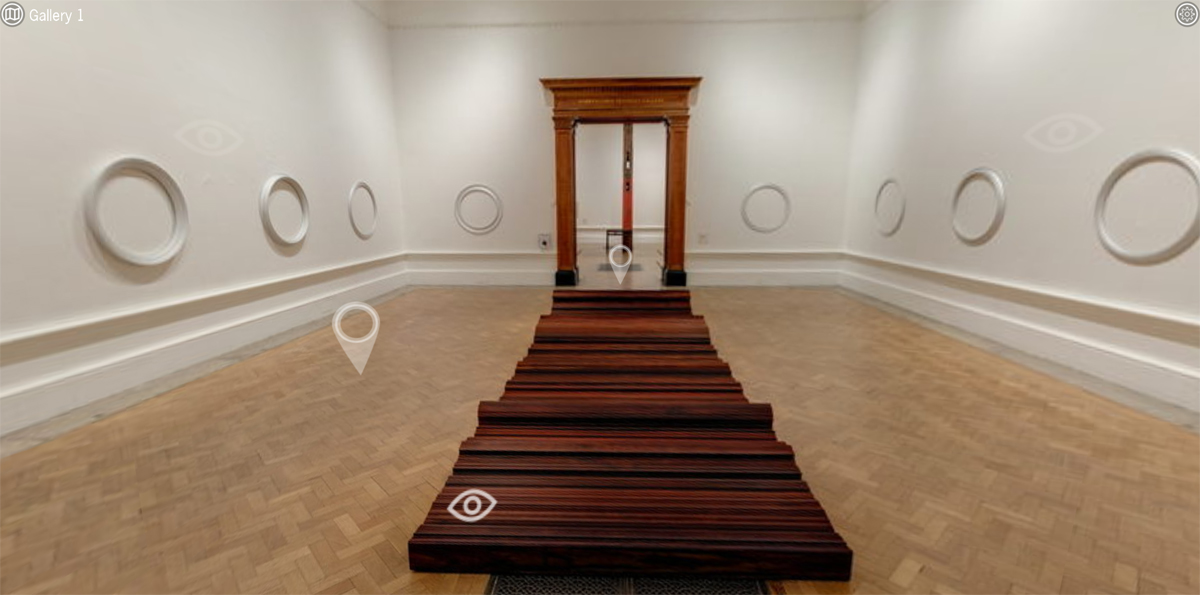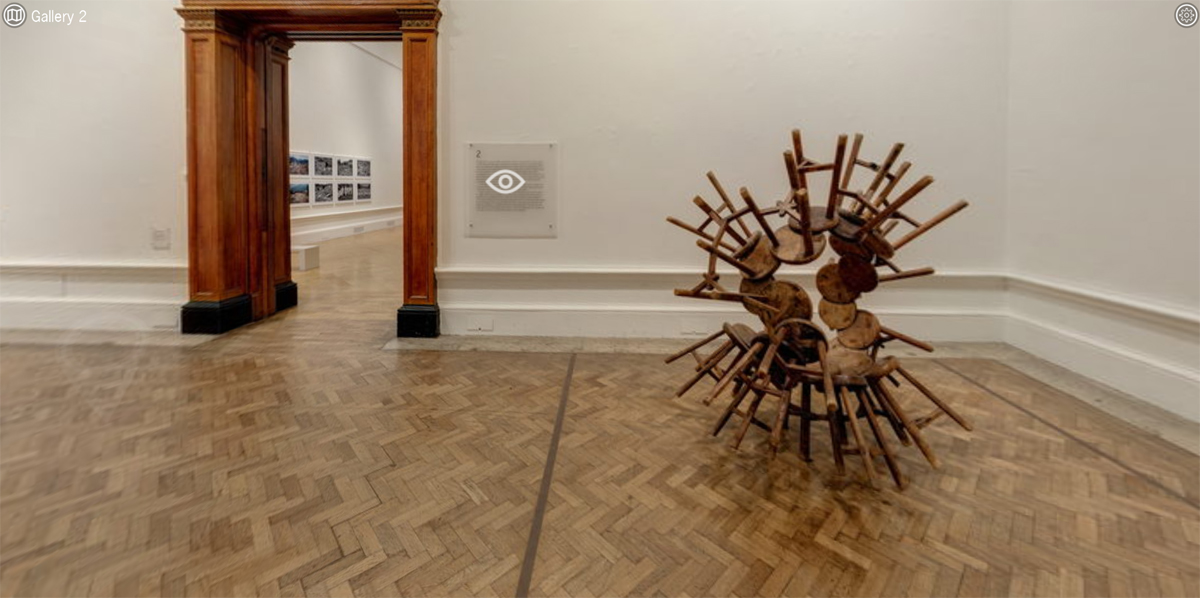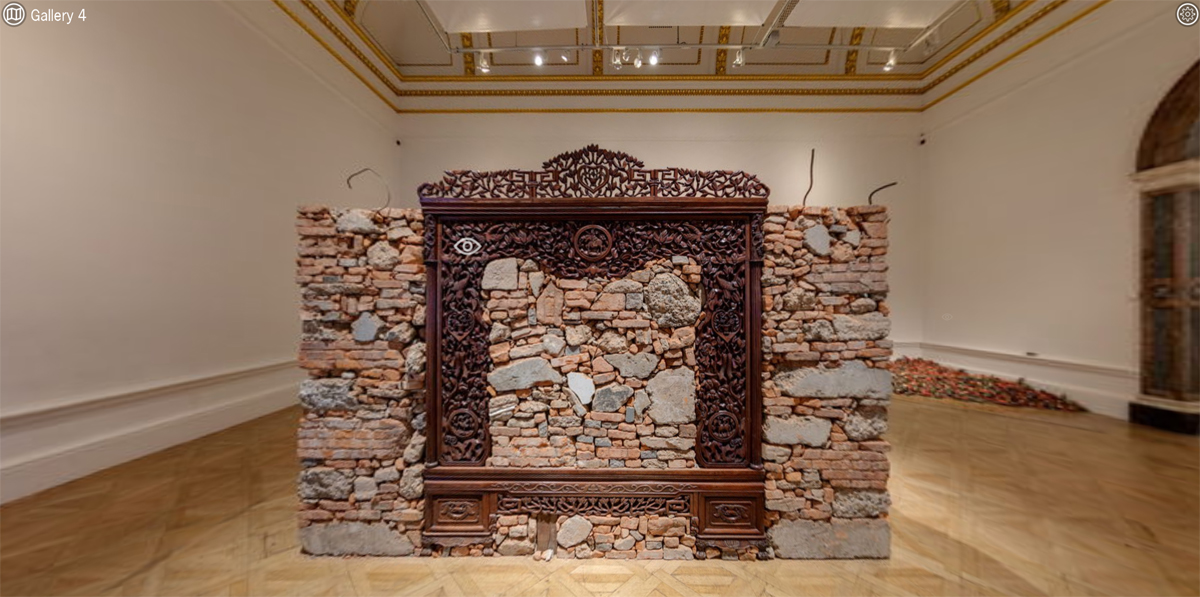Missed Ai Weiwei at the RA? Now you can visit it online
Ai Weiwei’s retrospective exhibition at the Royal Academy in London was one of the must-see shows of last year, and over 370,000 people visited it in the flesh. But if you missed out, don’t despair, as you can now view it online, via a 360 degree website commissioned by The Space and designed by AVM…

Ai Weiwei 360, which can be viewed at royalacademy.org.uk/aiweiwei360, is the latest example of how galleries and museums are beginning to recognise the value of creating alternative ways for visitors to see their most popular shows. Alongside ‘Exhibition on Screen’, a documentary series bringing art shows to cinemas, numerous institutions are experimenting with online versions of major exhibitions. The Space is at the forefront of this digital development in the UK, having worked with organisations from Tate Modern to Barbican, National Theatre of Wales to the Manchester International Festival to bring art and theatre online.
The Ai Weiwei website mixes stereoscopic 3D footage of the exhibition, which can be explored in 360 online, with video and audio content. The intention, according to Claire Hutchinson, Director of Audience Development at The Space, was to reach wider audiences for Ai (and The Royal Academy’s) work with the site. “It was about reaching new audiences, in different ways,” she says. “People who couldn’t make it, for reasons of cost or geography, but also younger audiences, who are interested in the digital but may not consider themselves traditional arts audiences … who may come across it through either social media or a digital article and are interested in just trying it out.”
Ai Weiwei makes a perfect choice for such a project, as not only was the RA show hugely popular but Ai particularly champions the use of digital technology to share his work, and actively encouraged visitors to the Royal Academy to snap and share photos of the show online and on social media networks. “He’s a really interesting artist so you’re already starting with a really good product,” says Hutchinson. “One of the challenges for people who want to capture exhibitions is how do you stay true to the work, and how do you involve the artist, when they’re really busy. He obviously has a view of his work and how he wants it to be presented – his studio were really cooperative and helpful, and he’s a very future-facing artist, so he was a good choice.”
The footage for the website was taken while the show was on, with the team shooting early in the morning or late at night so that the exhibition could be shown without the crowds. “One of the interesting challenges we had was when do you film,” says Hutchinson. “If you film when people are in, it’s nice because that feels real, but it’s really busy so you’re not going to be able to see any of the work…. We didn’t want it to feel empty so the audio is partly recorded with people in there. But I think it’s quite nice that you can walk round as if it belongs to you in some ways.”
This peacefulness is one of the pleasures of the site, as even at supposedly quieter times this was an extremely busy and popular exhibition. Hutchinson points out that the website allows viewers to interact with some of the films that were in the show in your own time, and be able to spend more time with them than may have been possible in the physical space. The site is also supplemented by other films, of the curator and artistic director of the RA talking about the show, as well as commentary from Channel 4’s Jon Snow. There is also an introduction by Julian Assange, chosen due to his political affiliations with Ai Weiwei but also, presumably, as an example of someone unable to physically visit the show.
There is much to enjoy in Ai Weiwei 360 though some of the filmed footage feels a little blurry and disorientating at times, which is a common dilemma with 360 sites. Technically, the experience doesn’t feel all that far removed from the kind of QTVR experiences the likes of AMX were doing in the 90s on CD-Rom.
Having seen the real show, it is hard to remove it from my mind when viewing the site and I wonder if that is a hinderance to these kinds of experiences, and whether it would be more successful if you hadn’t seen the exhibition previously or didn’t know the space, so it felt more like a pure online experience.
Of course sites like these will never be a substitute to seeing the sculptures in the flesh, though, as Hutchinson points out, it is intended to be an alternative experience. “It is a very different experience that you get online,” she says. “It’s quite personal, because you’re in your own space and you’re on your phone or your desktop. You can dip in and out and have more time with it. It isn’t going to be the same as the face-to-face experience but I think what this adds is more depth in some areas.”
The Space is also always looking at new ways to express art and live performance digitally. Virtual reality is inevitably part of their plans but they are also developing works using less expected channels such as Tumblr. “I think VR is becoming more and more accessible,” says Hutchinson. “I still think however that it’s really important that you build for desktop and mobile. We wanted something that people could have on the move but also on desktops – I think you have to build for those because the vast majority of people experience it in that way.
“I think we’re learning how people use VR,” she continues. “For example, a lot of people want to use it in theatre as well. Our view is always that the production needs to be fantastic and the VR can enhance, but the VR on its own does not make a great piece of work.”
Ai Weiwei 360 is a commission by The Space in partnership with the Royal Academy of Arts, and is designed and produced by AVM.royalacademy.org.uk/aiweiwei360
http://www.creativereview.co.uk/cr-blog/2016/january/missed-ai-weiwei-at-the-ra-now-you-can-visit-it-online/







0 Comments:
Post a Comment
Subscribe to Post Comments [Atom]
<< Home